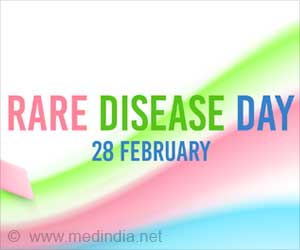World Rare Disease Day 2022: India homes nearly 70 million rare disease patients, but lacks in research, treatment as well as government policies

‘Rare diseases include genetic diseases, rare cancers, infectious tropical diseases, and degenerative diseases. About 80 per cent of rare diseases are genetic in origin and hence, disproportionately impact children.’





"As per data that is available in India, there are around 70 million rare disease patients. However, the number could be much higher than that and that is difficult to gauge," Prof Alok Bhattacharya, Professor of Biology and Head of Department at Ashoka University, told IANS. "It is because unfortunately neither the epidemiological studies have been done in India nor we have any idea about how many patients are there partly because there are only few centres where real diagnosis and management of these diseases happen," he lamented.
Further, Bhattacharya said that research on rare diseases has been "very rare" in India.
But there has been some improvement in the diagnosis of the disease due to private DNA sequencing sectors that are necessary for confirmative diagnosis of many of the diseases, he noted.
"But, there isn't much real research undergoing to understand therapy or the biology behind the rare diseases," he said.
Advertisement
Advertisement
It was revised on the suggestions of the law courts, state governments and patient advocacy groups. A new policy was then formulated by January 2020 and was released by the government on March 31, 2021.
According to Dr. Anjali Taneja, there have been some positive and welcoming changes.
Yet, the government could have considered more of a uniform financial allocation mechanism, she said.
It is because "for about 95 per cent of the rare diseases, there are no therapies and treatments in India," Taneja told IANS.
The new policy does not mention what should be done for those 95 per cent of the rare diseases, she added.
Taneja recommended a re-look of the policy more importantly in the implementation aspect of the policy and also the financial allocation, the accessibility especially to the rare disease patients who are staying in the remote areas.
Accessibility and affordability is a major issue because the cost of the treatment is exorbitantly high, she said.
"There has been no effort by the government to address the primary issue that is from where the drugs are going to come, how can we make the drugs accessible to people," Bhattacharya said.
Rare disease patients in India are being left at the mercy of crowdfunding platforms for their treatment, he lamented.
Bhattacharya said that in India, crowdfunding will not work really well.
The amount garnered via crowdfunding "will not do for even a single day".
"One thing you have to realise is that a lot of these treatments are not single, you have to take it for a lifetime and every dose costs lakhs of rupees.
"Per year costs remain very high, so Rs 60,000-80,000 will not cover for even a single dose, for two weeks."
To top it there are hundreds of diseases for which there is absolutely no treatment.
"What do you tell those patients? Is it bad luck that they have that disease for which there is no treatment? So I think in those terms the rare disease policy does not really answer any questions or any issues related to rare disease patients," he said.
"People living with rare diseases see no hope today. Hope can only come if the government can spend a few hundred crores on developing platforms like gene therapy, gene editing platforms," Bhattacharya added.
The best treatment for rare diseases would be to come up with a vaccine just like India did for Covid. It is the only way we can make treatment cheaper and accessible to everyone.
Source-IANS












